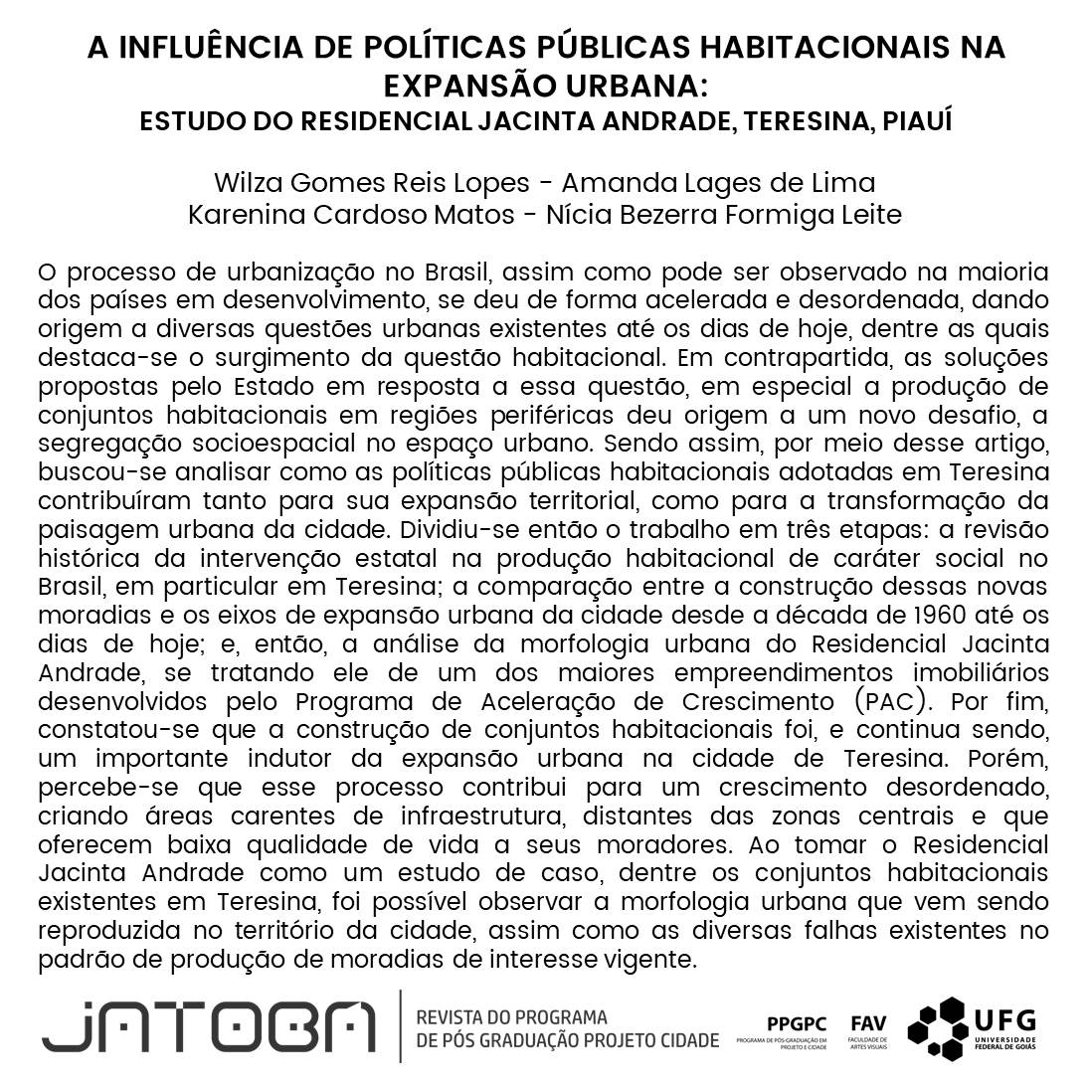The influence of housing public policies on urban expansion:
study of Residential Jacinta Andrade, Teresina, Piauí
DOI:
https://doi.org/10.54686/revjat.v2i.63401Keywords:
Urbanization; Social housing projects; Socio spatial segretation.Abstract
The urbanization process in Brazil, just like in most of other developing countries, happened fast and disordely, creating various urban problems that exist until nowadays, among which, it is highlighted the emergence of the housing problem. On the other hand, the solutions proposed by the State in answer to this question, specially the production of social housing projects in periferic regions generated a new challenge, the socio spatial segregation. Thus, through this article, it is sought to analyze how the housing public policies, adopted in Teresina, contributed to the territorial growth, as to the urban landscape transformation. This paper has been divided into three stages: a historical review of the Statal intervention at the production of social housing in Brasil, particurlarly in Teresina; a compartion between the construction of this new housing unities and the urban growth axis of the city, between 1960 and nowadays; and, then, an analysis of the urban morphology of the Jacinta Andrade Residential, being it one of the largest real estate developments produced by the Growth Acceleration Program (GAP). At last, it was found that the construction of social housing projects was, and stil is, an important inductor of urban growth in the city of Teresina. However, it is perceived that this process contributes for a disordely growth, creating regions precarious in infrastructure, far away from the central zones and that offer low life quality to its inhabitants. When taking the Jacinta Andrade Residential as a case study, among the social housing projects existing in Teresina, it was possible to observe the urban morphology that has been reproduced in the city territory as so the many failures involved in the current pattern of social housing production.
Downloads

Downloads
Published
How to Cite
Issue
Section
License
Copyright (c) 2020 Revista Jatobá

This work is licensed under a Creative Commons Attribution 4.0 International License.
- Autores mantém os direitos autorais e concedem à revista o direito de primeira publicação, com o trabalho simultaneamente licenciado sob a Licença Creative Commons Attribution 4.0 que permite o compartilhamento do trabalho com reconhecimento da autoria e publicação inicial nesta revista.
- Autores têm autorização para assumir contratos adicionais separadamente, para distribuição não-exclusiva da versão do trabalho publicada nesta revista (ex.: publicar em repositório institucional ou como capítulo de livro), com reconhecimento de autoria e publicação inicial nesta revista.
- Autores têm permissão para publicar e distribuir seu trabalho online (ex.: em repositórios institucionais ou na sua página pessoal) após a publicação inicial nesta revista, já que isso pode gerar alterações produtivas, bem como aumentar o impacto e a citação do trabalho publicado (Veja O Efeito do Acesso Livre).
- Foram feitos todos os esforços para identificar e creditar os detentores de direitos sobre as imagens publicadas. Se tem direitos sobre alguma destas imagens e não foi corretamente identificado, por favor, entre em contato com a revista Jatobá e publicaremos a correção num dos próximos números.














